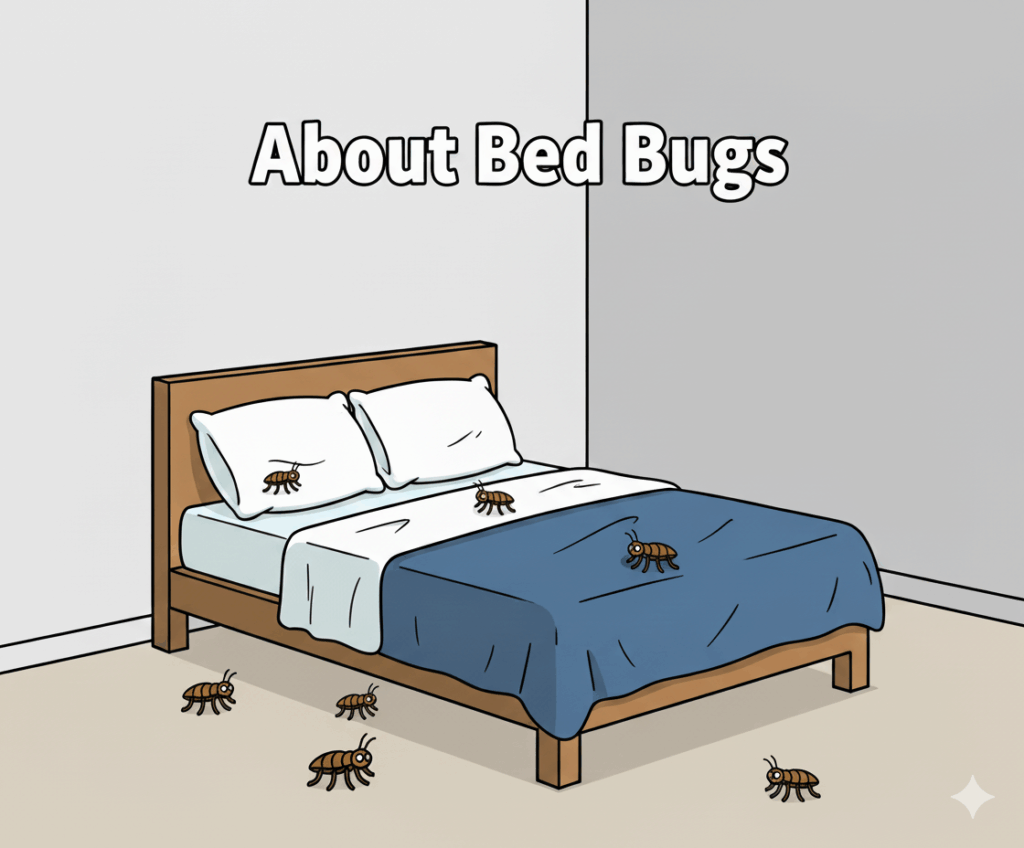Read Our Latest Article
About Bed Bugs: Understanding, Detection, and Control

Understanding bed bugs is the crucial first step to effectively eradicating them and, most importantly, keeping them out of your home. It’s an issue where taking the time to fully understand the problem will help you make the correct, long-term decisions on how to resolve it.
🔎 Bed Bug Basics
Native Bed Bug
Tropical Bed Bug
Cimex lectularius
Cimex hemipterus
Bed bugs are parasites that preferentially feed on humans. They are persistent pests that have evolved highly effective abilities to remain close to people.
They are not strictly nocturnal, but they are mainly active at night in bedrooms when people are stationary (i.e., sleeping).
Bed bugs have been documented as pests since the 17th century and likely followed humans out of the caves millennia ago. Prior to World War II, over 30% of all homes in the UK were infested. Widespread use of synthetic insecticides like DDT greatly reduced their numbers, but they have been making a worldwide comeback in the last decade.
Spread and Infestation Sources
While bed bugs are not considered a major health hazard, they are highly unpleasant and can cause severe lack of sleep.
- International travel and commerce facilitate their spread — eggs, young, and adults travel in luggage, clothing, bedding, and furniture.
- They can infest aircraft, ships, trains, buses, offices, and public spaces.
- Most frequently found in dwellings with high occupant turnover (hotels, hostels, dormitories, apartment complexes).
- Infestation is not usually a reflection of poor hygiene — it usually means previous contact elsewhere.
🔬 Identification and Life Cycle
Adult bed bugs are:
- Brown to reddish-brown in colour.
- Oval-shaped and flattened.
- Approximately 5mm to 7mm long.
Their flat shape allows them to readily hide in cracks and crevices. Colonies have been found in spaces thinner than a sheet of paper.
Life Cycle Facts
- Female bed bugs lay one to twelve eggs per day, coated with a sticky substance that helps them adhere to surfaces.
- Eggs hatch in about 10 days; nymphs begin to feed immediately and require a blood meal to moult.
- They reach maturity after five moults; development time varies with temperature (≈21–120 days).
- Adults can live 12–18 months and may survive up to 12 months between feeds.
Note: Juvenile bed bugs are correctly called nymphs (not larvae), as their lifecycle is incomplete metamorphic.
🤕 Bites and Health Impact
The bed bug bite is often painless at the time but typically causes skin irritation and inflammation later.
Reaction and Injury
- Individual reactions differ greatly in extent and timing.
- Small, hard, swollen white welts may develop with severe itching.
- Bites may appear in rows or batches but this varies and is not definitive.
- 1 in 10 people show no signs of biting.
Health Considerations
Bed bugs are not known to transmit diseases, though they can carry infectious material. Heavy infestations can cause anxiety and insomnia. Consult a GP for severe reactions; topical antihistamines or creams (e.g., Eurax) may be advised in some regions—ask your pharmacist or doctor.
✅ Tell-Tale Signs and Prevention
Definitive confirmation: Finding live samples, cast skins, or faecal traces (rusty/dark spots).
- Blood stains on sheets or mattresses.
- Eggshells and shed skins near hiding places.
- A noticeable sweet, musty odour in severe infestations.
Prevention: Inspect luggage, clothing and second-hand furniture; identify the source — if the source remains, infestation will continue. Early detection with passive monitors helps resolve issues with minimal disruption.
🛠️ Control Measures
Use an Integrated Pest Eradication (IPE) approach — multiple tactics, targeted treatment, and professional experience give the best results. Self-treatment often risks spreading the infestation.
Pre-Treatment Preparation: Avoid moving potentially infested items before professional inspection — moving items can spread the infestation.
Monitoring recommendation: If you’re concerned, install a passive bed bug monitor to detect issues early and limit disruption.
